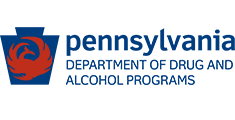The signs, symptoms, and effects of oxycodone addiction can be different for every person impacted. Learning about oxycodone addiction is one of the first steps towards getting better.
Understanding Oxycodone
Learn about oxycodone and substance abuse
Oxycodone is a synthetic opioid that is included in many prescription painkillers, such as OxyContin, Tylox, Percocet, and Percodan. These medications are most often prescribed to those who have been suffering with moderate to severe physical pain that has been caused by surgery, cancer, or another medical condition. When someone has consumed a prescription medication that contains oxycodone, he or she will likely experience a decrease in pain, along with an elevated mood and a sense of relaxation. When the individual limits his or her oxycodone use to the dosage and duration recommended by a physician, he or she can benefit from the positive impacts of the drug.
Unfortunately, the potency and prevalence of oxycodone have made it a substance that is commonly abused, both by those who want to achieve a recreational high, and those who want to self-medicate. Regardless of why an individual begins to abuse oxycodone, the results can be equally destructive. Oxycodone works with areas of the brain that also control automatic functions such as respiration and heart rate. Therefore, those who go over or ignore the suggested dosage amounts risk damage to the cardiovascular system, which can be life-threatening and, possibly, even fatal.
Additionally, the abuse of oxycodone exposes an individual to many different short-term and long-term dangers such as the development of an addiction. Clinically referred to as opioid use disorder, oxycodone addiction can take away one’s ability to manage the amount and frequency that he or she abuses the substance. It will also cause an individual to put the acquisition and use of oxycodone above all personal, academic, and professional obligations, as well as other responsibilities he or she might have.
Statistics
Oxycodone addiction statistics
The American Society of Addiction Medicine (ASAM) reports that about 1.9 million Americans have a substance use disorder that includes prescription pain medications such as oxycodone. ASAM also reports that women are more likely than men to grapple with chronic pain and to be prescribed painkillers. Furthermore, ASAM notes that 48,000 women lost their lives to prescription painkiller addiction between 1998 and 2010. The National Institute on Drug Abuse (NIDA) reports that 81% of all prescriptions for oxycodone worldwide are written for individuals in America. NIDA also states that between 2001 and 2014, the annual death rate from prescription painkiller overdose within the country rose by 340%.
Causes and Risk Factors
Causes and risk factors for oxycodone addiction
An individual’s risk for abusing and becoming addicted to oxycodone might be affected by a number of genetic and environmental risk factors, including the following:
Genetic: Having a family background of substance abuse can increase one’s risk for developing an opioid use disorder. The family risk is greater in those who have a parent or a sibling who has struggled with addiction or a mental health condition. Heritable traits such as novelty seeking and impulsivity can also increase one’s vulnerability for developing a substance abuse problem that includes oxycodone or another opioid.
Environmental: Early exposure to substance abuse through friends and/or relatives who abuse oxycodone or other opioids can be an environmental risk factor for an individual developing an opioid use disorder. Trauma, poverty, and pain caused by injury, disease, or surgery can also increase one’s risk for abusing oxycodone.
Risk Factors:
- Receiving a prescription for oxycodone
- Trauma
- Early exposure to substance abuse
- Poverty
- Family history of mental illness
- Personal history of mental illness
- Family history of substance abuse
- Prior substance abuse
- Gender (women are more likely than men to be prescribed oxycodone)
Signs and Symptoms
Signs and symptoms of oxycodone addiction
Those who have been abusing or who have become addicted to oxycodone might display a number of different symptoms, including, but not limited to, the following:
Behavioral symptoms:
- Trying to borrow or steal money or goods to exchange for drugs
- Abusing oxycodone even after experiencing negative outcomes from prior use
- Abusing oxycodone when it is obviously risky or reckless to do so, such as while also abusing another substance or when driving a car
- Habitual absences from school or work
- Trying to fraudulently obtain a prescription for oxycodone or attempting to acquire this drug via another illicit means
- Lying, secrecy, and deception
- Declining performance in school or at work
- Attempting, but failing, to end one’s use of oxycodone
- Trying to borrow or steal oxycodone that has been prescribed to someone else
Physical symptoms:
- Excessive yawning
- Itchiness
- Problems with balance, coordination, and reflexes
- Faint pulse
- Weight loss
- Drowsiness
- Shallow, slow, and/or labored breathing
- Numbness to pain
- Dilated pupils
Cognitive symptoms:
- Impaired memory
- Impaired judgment
- Difficulty with concentration or focus
- Poor spatial relations
Psychosocial symptoms:
- Panic
- Mood swings
- Anxiety
- Loss of interest in significant activities
- Uncharacteristic anger
- Paranoia
Effects
Effects of oxycodone addiction
The continued, untreated abuse of oxycodone can cause a series of dangerous effects and outcomes, such as:
- Damage to heart and lungs
- Marital strife, including separation and divorce
- Physical injury due to impaired judgment and coordination
- Damage to vision
- Family discord
- Sexual dysfunction
- Social withdrawal or ostracization
- Suicidal actions
- Academic failure
- Legal problems, including arrest and incarceration
- Loss of child custody
- Damaged or ruined interpersonal relationships
- Job loss
- Unemployment
- Suicidal thoughts
- Financial ruin
Co-Occurring Disorders
Oxycodone addiction and co-occurring disorders
Those who become addicted to oxycodone might also be at risk for developing symptoms of the following co-occurring mental health problems:
- Other substance use disorders
- Posttraumatic stress disorder (PTSD)
- Depressive disorders
- Anxiety disorders
- Bipolar disorder
Withdrawal and Overdose
Effects of oxycodone withdrawal and overdose
Effects of oxycodone withdrawal: An individual who has become addicted to oxycodone might suffer the following withdrawal symptoms when he or she attempts to stop his or her abuse of the substance:
- Diarrhea
- Insomnia
- Painful abdominal cramps
- Intense cravings for oxycodone
- Loss of appetite
- Profuse sweating
- Watery eyes and runny nose
- Muscle spasms
- Nausea
- Vomiting
- Tics, tremors, and shakiness
Effects of oxycodone overdose: Someone who suffers from the following symptoms after consuming oxycodone might have overdosed and requires immediate medical attention:
- Pupillary constriction or dilation
- Disorientation or confusion
- Loss of consciousness
- Cold, clammy skin
- Slow or shallow heartbeat
- Slow, shallow, or labored breathing
- Bluish tint to skin near lips and/or fingertips







